Leaders’ debate: Delivering a decarbonised Ireland
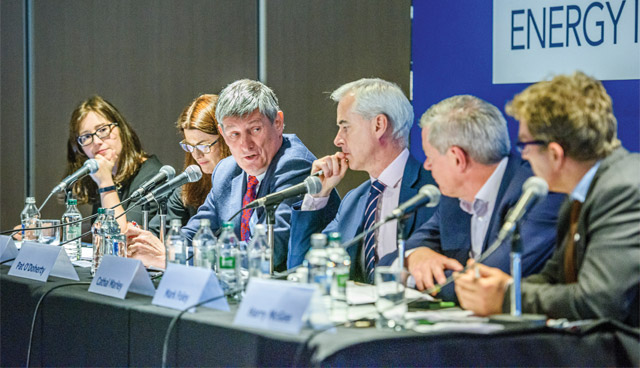
Key stakeholders in the Irish energy sector came together at Energy Ireland 2019 to discuss the main drivers for decarbonisation and the technology required to achieve this.
The launch of the Government’s Climate Action Plan at Energy Ireland 2019 was met positively by a sector who have long supported the full implementation of a new plan.
Coherent policies put in place to cover electricity generation, heat and transport are viewed as key facilitators of Ireland meeting its climate action targets for 2030 and there is further recognition of the economic benefits surrounding implementation of the plan.
Job creation opportunities exist, however, so too do challenges around adequate training and the development of a skills’ base, required to effect change in a short period of time. On this, participants agreed on the need for a vibrant, energy-focussed research programme in Ireland.
Decarbonisation priorities
SSE Ireland’s Marian Troy outlines her organisation as being one that is synonymous with renewables. She confirms that the further development of offshore wind is now a priority, adding: “SSE fully supports the 70 per cent renewables’ target. We need all of the new technologies fully implemented to make this happen as quickly as possible.
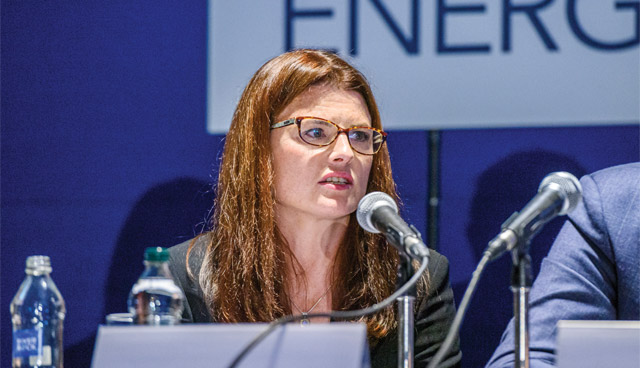
“Offshore wind is the technology that will help us make the big steps in this regard. The DS3 programme and envisaged DS30 programmes will be instrumental in delivering grid stability. Solar uptake will be highly dependent on future government policy.”
Bord Gáis Energy’s Joanne Ross confirms the need to look at electricity, heat and transport in the round, adding: “Yes, we have made great progress with wind in the context of the DS3. This was set up to allow Ireland to meet its 2020 electricity targets by increasing the amount of renewable energy on the Irish power system. However, we also need to keep emerging technologies on the table.
“Where electricity is concerned, there is a lot more to do. We need to look at large scale batteries but we also have to be careful in terms of new demand for new and decentralised centres. There is also a requirement to have a better regional balance regarding the operations of the grid.”
Ross admits that heat and transport represent huge priorities for Ireland. She says: “Transport feels a little bit easier regarding the new targets that have been set for the sector.
“But heat targets are the most challenging for the country as a whole. Ireland is different from the rest of Europe. Realistically, we need a long time to move on the current stock of gas and oil boilers. People will come at these issues with different capabilities to make the change.”
Pat O’Doherty of ESB says that the new Climate Action Plan is carbon budget-based and has a strong sectoral focus. He highlights that significant progress has already been made to remove carbon from electricity generation in Ireland, pointing out that over the past 30 years the carbon intensity of electricity in Ireland has halved.
Electricity generation currently accounts for just under a fifth of Ireland’s carbon emissions. This has been driven by various policy measures, including the EU Emissions Trading Scheme. O’Doherty states: “The new Climate Action Plan will tackle the emissions challenge. It calls out the role of electrification. Electricity has done most of the heavy lifting, where decarbonisation is concerned, up to this point. Moving forward, our priorities are transport and heat.
“The electricity sector has played a key role in allowing the adoption of renewable technologies and large scale wind is crucial as we look to the future. There is no reason why we can’t electrify heat and transport while, at the same time, putting the customer at the centre of this transition.”
O’Doherty believes that the next decade will see a major ramp-up in the number of electric vehicles and heat pumps. The number of distributed generation and storage devices on the system will also increase dramatically.
Ervia’s Cathal Marley highlights the significance of agriculture’s 33 per cent contribution to Ireland’s greenhouse gas emissions but believes that all sectors must be looked at.
“As well as considering the future impact of technologies that are not yet fully tested, we must also look at infrastructure already in place and ensure that we get the very possible return from it. It’s a case of picking the right technology mix and then leveraging the investment that is already in place.”
EirGrid’s Mark Foley states the need for concentration on already proven technologies, such as onshore wind, offshore wind and solar, given the short outlook to 2030.
“We need to get on with the work in hand,” he states. “10 years is nothing when it comes to developing new infrastructures.”
Panellists discussed the potential for ocean and tidal technologies to play an important role as Ireland looks to adopt renewable technologies that will help deliver its 2030 and 2050 targets, with Pat O’Doherty stating that while ESB has been keeping an eye on ocean technologies “the problem is that ocean energy options have not really moved forward in the last 15 years or so”.
The role of gas
Referring to the Action Plan with regard to gas, Ross explains the need to “green the gas network”.
“Heating represents a major challenge. The capital cost required to re-fit homes will be massive. Different people will need different types of support to make this work. People already in fuel poverty will find the move to electric heat pumps very expensive.”
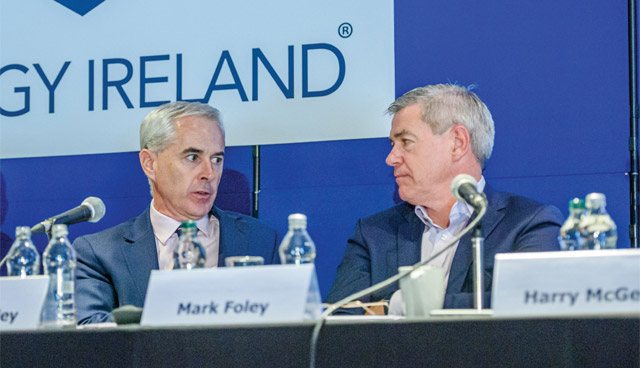
Pat O’Doherty adds: “Given the price point of wind, there are other renewable energy options that will make sense. Solar has a role to play in this regard. With regard to gas, there is going to be a need for gas generation, certainly up to 2030.
“Beyond 2030, two options are open: Carbon capture and storage (CCS) or Hydrogen. CCS has not moved in 10 years but it is also an international game. Ireland cannot go down this road on its own.
“Hydrogen technologies are already available. They are already used by the fertiliser industry. Biogas can be used for inclusion in the existing gas networks.”
Marley points out that the importance of gas is not clear in the new Climate Action Plan, stating: “Gas supplies over 30 per cent of total energy requirements of the country. It is critical to the fabric of energy landscape in Ireland. Gas will help generate electricity at times when renewables are not around.”
Looking to the future, Marley projects a 50 per cent increase in the demand for electricity, adding: “Gas will be with us for quite a long time but we must decarbonise the gas network by 2050. Hydrogen, biogas and CCS will all be part of the final mix.”
Focussing on the heavy goods vehicle (HGV) sector, Marley says that compressed natural gas, or CNG, will help decarbonise that industry. He adds: “It is projected that 150 CNG stations will be in place over the next decade. Domestic heating will be a difficult nut to crack, however, gas is a more carbon friendly option than oil and coal. Where new builds are concerned, electricity and heat pumps represent a realistic heating option.
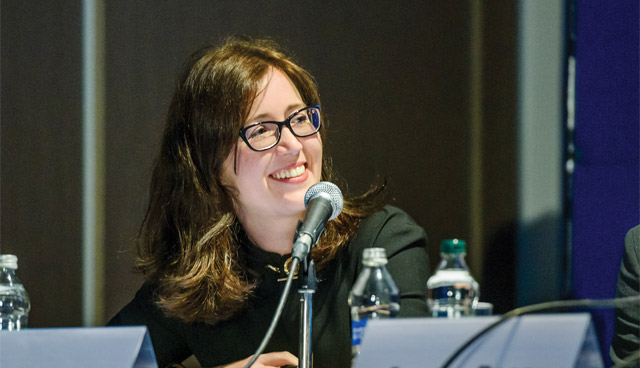
Commenting on the future plans now in place for EirGrid, Foley confirms that the organisation will play a major role in helping to decarbonise Ireland. “We will double our commitment to renewables. This will mean sourcing a further 5,000 MW from wind and solar,” he says.
“However, to make this happen will require us to build the necessary transmission infrastructure. We also need to facilitate the envisaged 40 per cent increase in demand for electricity.
“This means yet more infrastructure, more wires and more pylons. We need to convince people in rural Ireland that all of this will be necessary. Building an interconnector with France is also crucial. We are looking at the biggest transformation in the power system that the State has ever seen. The market must evolve to allow this to happen in the most cost-effective way possible.”
Turning to the future role for electric cars, O’Doherty says that it is only now that sufficient numbers of these vehicles are coming on to the market. He adds: “The economic downturn was very much responsible for slowing up the adoption of this technology in Ireland.
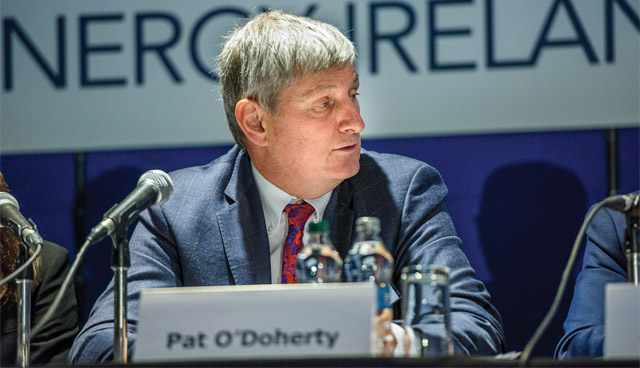
“However, now we have the most comprehensive electric vehicle infrastructure in the EU but it needs updates. Cars are now available that can deliver 400kms of travel per battery charge. In addition, it is now possible to fully charge these vehicles in less than 15 minutes.
“A key tipping point has been reached. ESB will roll out further charging points during the period ahead. Charging points for 800,000 vehicles by 2030 will be feasible.”
Retrofitting
The final point discussed by the panel was that of retrofitting Ireland’s existing stock of houses. Foley confirms that a deep retrofit will come at huge costs per property.
“On the one hand this is a massive challenge but it also creates the opportunity to create a major industry, centred on new trades and skills over the next 20 years,” he comments.
“We have the vision but we must get out of the blocks now. We hadn’t the expertise to develop offshore wind 20 years ago but look where we are today.
Marley stressed the need for deep retrofitting to be all encompassing in nature. He concludes: “It must include new insulation systems, underfloor heating and the installation of heat pumps.”






